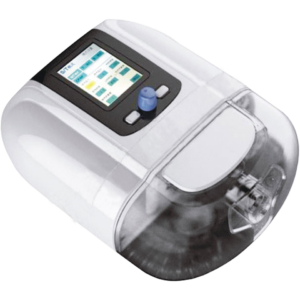Description
TRANSPORT VENTILATOR
Transport Ventilator is used for First-Aid, Ambulance, Emergency situation and
patients’ transport in hospital. It can be used for child and adult patients.
Features:
– Multiple functions, compact design, easy to take, design for transport and first
aid.
– The main parts adopt good-quality components, accuracy and reliable.
– Special self-test function.
– Large LCD screen, Dial operation, simple and intuitive.
– 3 kinds of power sources can be chosen: AC, DC and Internal Battery.
Environmental Requirements
– Relative humidity : 15%~95%
– Ambient temperature : -18~50°C
– Atmospheric pressure : 70~110kPa
– Gas source : 0.28~0.6Mpa 60I/min
– Power : AC100V-240V or DC12V
– Li-battery : 2200mAH, rechargeable
Classification
– By protection against electric shock.
– By protection against harmful ingress of water, particulate matter.
– It is suitable for the patient whose weight is more than 25KG.
Configuration
– Standard Configuration: Ventilator,
– Oxygen Pressure Reducer,
– High-Pressure oxygen hose, Lung
– Simulator, Breath Circuit, Mask,
– Head Band, Power Adapter,
– Carrying Package, 2L oxygen
– Aluminum Cylinder, Oxygen Bridge,
– Hanging Rack.
Technical Specifications:
– Modes : CMV, A/C, SIMV, CPAP
– Tidal Volume : 50~2000mL
– Respiratory Rate : 1~100 bpm
– FiO2 : 40%~100%
– Trigger : -20~19 hPa
– Peak Pressure : 0~60 hPa
– Max Minute Volume : ≥22L/min
– PEEP : 0, 5~20hPa Adjustable
– PIP : 0~60 hPa
– Over Pressure Relief : ≤ 72hPa
– Sigh : 0~10 per 100 breath
Monitors:
– Tidal Volume
– Oxygen Concentration
– Sigh
– Respiratory Rate
– Trigger
– CPAP pressure
– Peak Airway Pressure
– Time Pressure Wave Form
Alarms:
– High Airway Pressure
– Low Airway Pressure
– High respiratory rate alarm
– Low Battery
– Low Oxygen Source






 Juniper 3 Procurement Corp.
Juniper 3 Procurement Corp.















